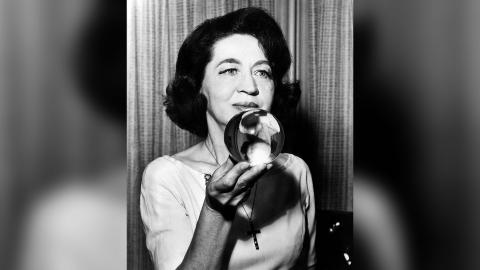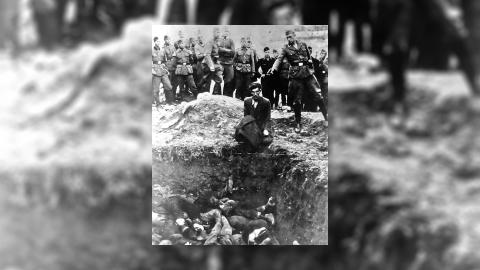The life and death of Rasputin: Part 3
What was conceived as a straight forward assassination with poison had now taken on a nightmarish scenario as Rasputin appeared to be invincible and immune to attacks on his body.
How Rasputin met his violent death
On the 27th June, 1914 Rasputin returned to his home village where during a visit to the post office he was approached by an odd-looking peasant woman who suddenly lunged at him with a knife, penetrating his stomach and wrenching out his intestines. The woman turned out to be a syphilitic afflicted prostitute who had been sent by one of the banished monks to kill Rasputin.
While Rasputin undertook a long stay in hospital seismic events were taking place thousands of miles away in Sarajevo, Bosnia when Archduke Franz Ferdinand was shot and assassinated. The violent incident spiralled Europe into what became known as the Great War setting Germany against Russia. Ironically, Rasputin may have been the one person who could have advised Tsar Nicholas not to mobilise against his cousin, Germany’s Emperor, Wilhelm II (Kaiser Bill) known to Nicholas as ‘uncle Willy’. But desperate for war to make himself popular with his people Nicholas ignored Rasputin’s telegrams not to take up arms. It was to be the catalyst for the downfall of the ruling Romanovs, Rasputin and Russia.
Drowning in blood
Rasputin returned to St Petersburg as powerful and influential as he had ever been when an opportunity arose where the manipulative monk could step into the Tsar’s shoes. Because of Russia’s devastating war with Germany Tsar Nicholas went off to commit to military duties on the Western Front, leaving his wife Alexandra in charge of affairs at the palace.
The Empress became increasingly dependent on Rasputin as he began advising her on affairs of the state and war. Sat behind a desk in the Alexander Palace Rasputin hired and fired ministers and proved to be a disaster in his new position of authority as millions of Russian soldiers were being killed or wounded in a hopeless battle. Russia was plunged into an economic and poverty-stricken nightmare as St Petersburg witnessed mass refugees, demonstrations and an increase in the suicide rate. The ordinary Russian people, suffering beyond anything they had known before were beginning to hate the privileged royal family and ready for revolution.
Prophecy of death
By 1914 St. Petersburg found itself in a vortex of hopelessness and chaos which reflected Rasputin’s own state of mind as his health deteriorated and affected his once-famous healing powers. It was at this low point that the once invincible monk started to believe in his own mortality and prophesied his own and the Romanov family’s deaths through murder. Outside on the streets the embittered citizens, exhausted by lack of food and resources began to believe that Rasputin was a spy and having carnal relations with Empress Alexandra, who was already being vilified due to her German background. These views were shared by officials who thought Rasputin was ignorant, corrupt and far too powerful. He was seen as a malevolent influence, a satanic power behind the throne and bringing Russia down, and who needed to be got rid of.
Audacious assassination plot
Two men who saw an opportunity to rid Russia of Rasputin while garnering fame and rewards from the monk’s ever-increasing enemies in parliament were also known to the Romanovs. Prince Felix Yusupov was a rich, handsome and hashish smoking Russian aristocrat known for his flamboyance and bohemian lifestyle. He married the beautiful niece of Tsar Nicholas and used his position to lure Rasputin into a trap. Yusupov’s accomplice was Grand Duke Dimitri Pavlovich of Russia. He was the Grandson of Tsar Alexander II and first cousin of Nicholas. Through his friendship with Felix Yusupov he took part in the now legendary assassination of Grigori Rasputin. The two men hatched an audacious plot to secretly kill the monk knowing that Tsar Nicholas and his wife Alexandra would seek revenge for eliminating the one man they believed could keep their son Alexei alive.
Cyanide, gunshots and bloody bludgeoning
According to Prince Felix Yusupov on a cold snowy night on 30 December, 1916, he invited Rasputin to meet his beautiful wife Irini at the Yusupov’s palace. It was an invitation the lecherous monk couldn’t refuse as he was picked up by car and taken to the prince’s stately home. Once there Rasputin was led to a basement dining room which had been staged to make it appear as if people had been enjoying a late dinner.
The doctor who supplied the cyanide fainted in terror at the thought of being killed by an incandescent Rasputin.
While Rasputin sat contently waiting for Prince Felix’s wife he was presented with a plate containing cream cakes and wine. All of them had been laced liberally with cyanide. Rasputin waited and to his assassins’ frustration ignored the appetising offerings. Having waited for a while Rasputin finally began eating and drinking out of boredom. Two and a half hours later the monk showed no signs of illness from the deadly cyanide. The massive doses of poison had no effect, prompting a panicking Yusupov to run upstairs to retrieve a revolver.
Confronted with a gun pointing at him Rasputin didn’t attempt to fight back or flee. He took a shot to his body and fell to the carpet. Minutes later Yusupov and his fellow conspirators celebrated the death of Rasputin upstairs. But returning to the basement Prince Yusupov discovered that Rasputin’s body showed signs of life as his eyes opened wide. The enraged monk jumped up and began to throttle the alarmed Yusupov. Screaming for his life and running back upstairs the doctor who supplied the cyanide fainted in terror at the thought of being killed by an incandescent Rasputin.
Rasputin’s last hours
What was conceived as a straight forward assassination with poison had now taken on a nightmarish scenario as Rasputin appeared to be invincible and immune to attacks on his body. Back downstairs a nerve shattered Yusupov saw that Rasputin was no longer there and instead after having crawled up a flight of stairs the injured monk, appearing to be the very demon his reputation alleged , had made his way out into the courtyard in the freezing snow. An anxious Yusupov fired twice at point-blank range even though Rasputin remained alive, screaming at his attackers that he was going to tell the Empress.
Two more shots were fired from the Tsar’s cousin hitting Rasputin in the back and head as a hysterical Yusupov ran over to the body and began bludgeoning it with a metal cosh. Still, Rasputin was alive, even when bundled up and stuffed into a car and driven miles out to a bridge on the outskirts of St Petersburg. At five in the morning in the freezing cold the conspirators tried to stuff Rasputin’s body into a hole in the ice, hoping that it would be dragged out to sea. Finally, the deed was done and Yusupov, not known for his discretion boasted to comrades that he had done away with the Siberian monk who had been seen as a toxic influence on the Russian royal family.
Macabre sight
Two days after the bloody murder a grotesque frozen corpse was pulled out from its watery grave. An autopsy showed Rasputin’s frozen body had water in the lungs suggesting that he had been alive when thrown into the river. The conspirators, Prince Yusupov and Grand Duke Dimitri Pavlovich were keen to fashion the legend that they had battled with the devil, which in reality took five men to shoot him and dump his bludgeoned body into the icy waters of the Neva River. Rasputin’s violent death preceded that of the equally brutal assassination of the entire Romanov family in a Siberian cellar less than two years later soon after civil war broke out and as Russia imploded into a political maelstrom of revolution by the Bolsheviks. Whether the self-proclaimed monk and mystic with alleged magical abilities was simply an ambitious and adventurous peasant or a ‘devil’ with divine powers is a question no one can truly answer. What is a certainty is that Rasputin’s image has become an everlasting icon for representing evil and dark forces.
















